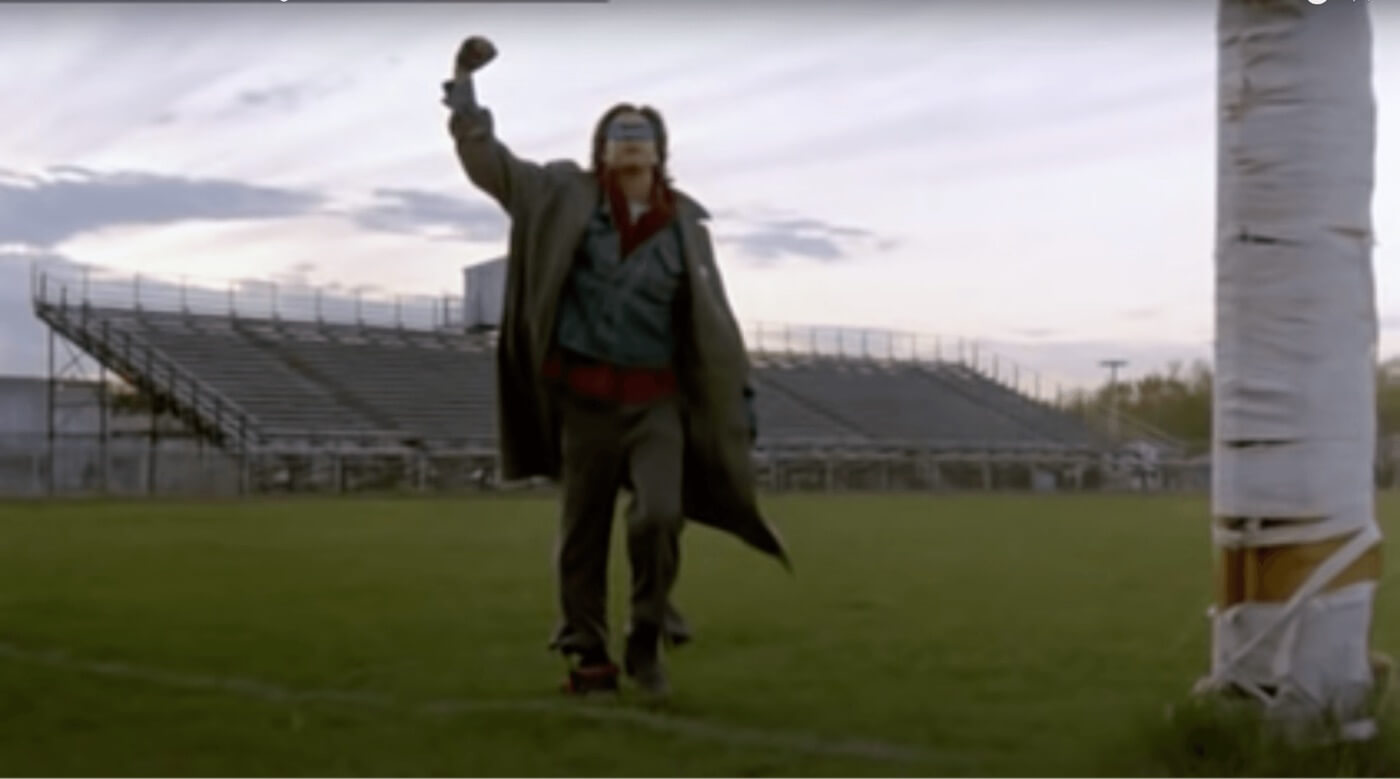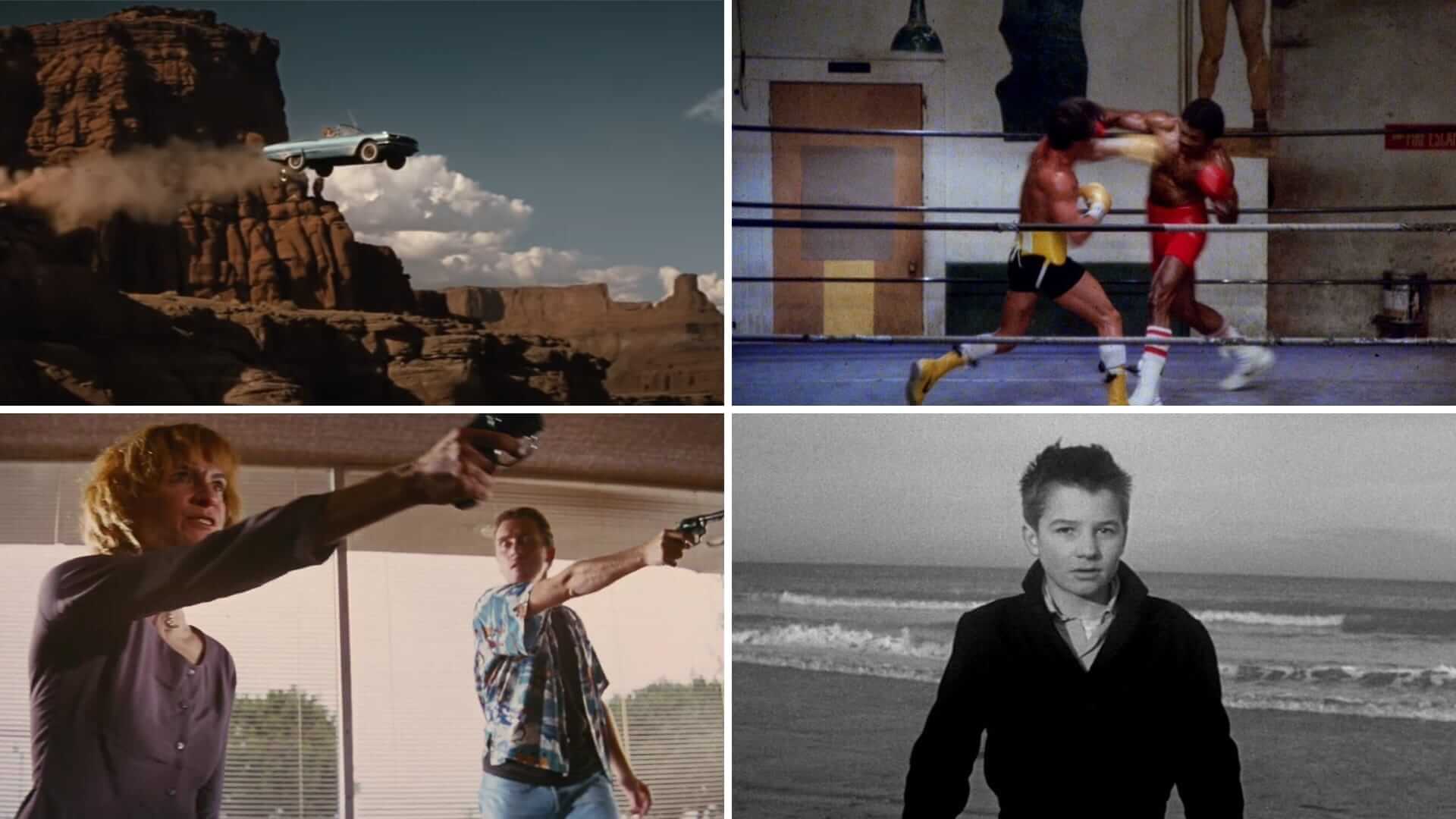While not always necessary for story-telling, freeze frames are a timeless tool in film and television. Whether for stylistic purposes or to draw attention to particular aspects of your film, it’s important to whittle down the motivation for your freeze frame. Read on to dissect successful freeze frame movie examples and ways you can implement them in your own work.
Freeze Frames in Practice
First, let’s define freeze frame
If you were to watch a film and hit pause, the still image on the screen is your freeze frame. Only in this case, we are referring to a freeze frame technique, or still images intentionally worked into the edit.
Typically, this is for the purpose of drawing attention to a specific element of the scene. So, let’s unpack the actual freeze frame definition.
FREEZE FRAME DEFINITION
What is a freeze frame?
A freeze frame is when a film suddenly freezes on a single, still frame. It is an editorial choice made for a variety of reasons. This is most commonly used for the very last shot of a movie as a way to capture a moment in time. Another common application is when a narrator "pauses" the film in order to add clarification or make a joke. One potential risk with using this technique (as illustrated above) is that it can pull the viewer out of their immersive experience. By literally stopping the movie, you call attention to the fact that it's only a movie. But this is mitigated by placing them at the very end of the film when the illusion is over anyway. Or when using a narrator which can be another way to gently break the fourth wall.
Famous Movie Freeze Frames:
- Thelma & Louise ending
- Harry Potter and the Prisoner of Azkaban ending
- The Breakfast Club ending
A freeze frame occurs when repeating a frame in the edit or printing multiple copies of the same source frame.
The result is a static shot that resembles a photograph.
A number of classic and present day films alike have utilized the freeze frame technique, and it’s crucial to understand their usage, especially if you’re interested in trying it out. Let’s look at some famous movie freeze frames.
The opening sequence of Snatch showcases some highly stylized freeze-framing. Used for introducing characters, this freeze frame effect breaks the illusion of watching the film by drawing attention to an obvious manipulation of time and events on screen.
Not only does it accomplish this by freezing an image on screen, but it implements character names on screen in a very specific style. All of which reenforce the tone and aesthetic of the film (an important consideration with this effect) while also conveying information to the audience.
Intro to Snatch (2000)
The beginning of Pulp Fiction’s also expertly showcases this technique when Honey Bunny is yelling at the diner’s patrons. This is a strong example of a freeze frame for a totally different reason than Snatch. Through this dramatic pause, the audience is teased in a sense.
For the scene thus far, we watch as the robbery is about to take place. Just as the action gets going, Tarantino rips the rug out from underneath us to begin the intro sequence for the film. It is only in Act Three that we find out what happens next.

Pulp Fiction (1994)
Another iconic example would be the ending of The Breakfast Club. It’s not uncommon to use a showcase at the end of a film and it’s possible this famous ending influenced that trend. In combination with the empowering narration, the still frame echoes the notion that the breakfast club, our ensemble cast, has “stuck it to the man” as it were.

The Breakfast Club (1985)
It almost acts as a period at the end of the last sentence in the narration, reenforcing the importance of the dramatic change our protagonists have made over the course of the narrative.
Technique Origins
The first freeze frames in movies
The first-ever freeze frame was used in 1928 by none other than Alfred Hitchcock in his film Champagne. Since then, the technique has been used in multiple TV shows and films, including but not limited to “Wonder Woman” (the series), “The Mary Tyler Moore Show,” It’s A Wonderful Life, and The 400 Blows. Check out the video below to see just how long the list of popular movies with freeze frames can be.
Tribute to freeze frames
Freeze framing is also an imperative facet of theater history. Sometimes referred to as a plateau, freeze frames occurred when actors on stage would hold their position on stage to emphasize an important part of the scene or plot. Similar to freeze frames in movies and TV, this was done strategically and with clear purpose. In the video below, you can see how freeze framing is important for theater and film alike.
Freeze framing in theater
As much of today’s entertainment has roots in theater, it stands to reason that the idea of holding focus on an image has evolved over time, though maintained its original proposed function: strengthening story-telling. It’s for this reason though, that freeze frames in movies and TV must be chosen wisely; if a picture says a thousand words, so should the frame you choose to make your audience focus on.
Evolution of Freeze Frames
How have freeze frames evolved?
While the classic freeze frame can definitely elicit retro vibes, there are plenty of modern day freeze frames that prove the sky is the limit for stylistic choices. With advances in editing technology, there’s a lot more you can do with your pauses and interruptions.
Suicide Squad (2016)
While this is a trailer, it’s a solid example of how you can add so much to elevate your freeze frame. In the Suicide Squad trailer, the kitschy and stylized animations add to the frame by not only giving relevant information about our characters, but setting the tone for the film.
Similarly, in the second example above, Suicide Squad has short freezes which also give information and keep the style choice of the freeze frame as a cohesive editing element.
Frozen frames are stylistic approaches to exposition and emphasis alike. And so long as they are properly motivated by your story, they can prove both retro or modern. They may break the illusion but they can be another meaningful layer of your visual language that brings the edit to the next level.
Up Next
What is Lens Flare?
Freeze frames are one of many classic but beloved editing techniques. If you’ve ever wanted to add (or remove) a lens flare, check out the link below to learn how and why that may be your best move.
Up Next: What is Lens Flare? →
Showcase your vision with elegant shot lists and storyboards.
Create robust and customizable shot lists. Upload images to make storyboards and slideshows.
